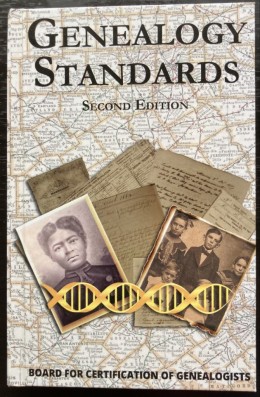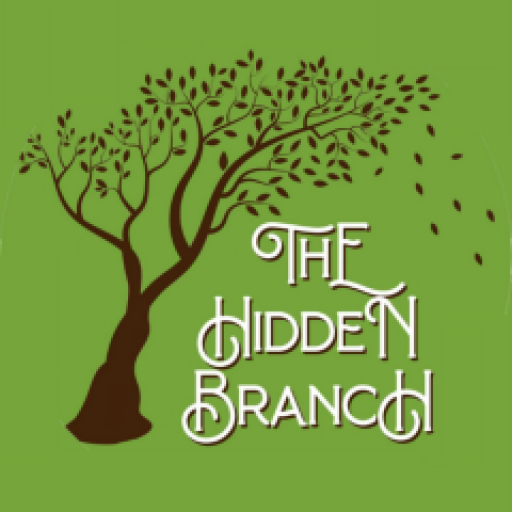This article was written in collaboration with P.J. Elias.
A few months ago I (Emmy) began looking at ways I could get certified as a professional genealogist. While it may be a little while off yet, both P.J. and I were intent on furthering our genealogical journey. That is when we stumbled upon the Board for Certification of Genealogists (BCG) and their ultimate how-to guide in Genealogy Standards. We both bought the most recent edition (pub. 2019) and read it at our own pace. If you wish to purchase the book, click here.

I was hoping this book would help me to hold my genealogical work to a certain standard, as previously I had been lost in which referencing style to use and I couldn’t answer the question of how much evidence is enough? To P.J., this book was considered to be “the gold standard of genealogy” as it is used by many professionals in the field, and to him it was the “logical next step” in his journey.
We were both impressed by the book but it also left us thinking about things that hadn’t been mentioned. So, let us take you through our list of pros, cons, and what we would like to see for the future.
Firstly, we both noticed how clear and easy to read the book was. We also loved the fact that it was small in size and length, meaning that the authors got straight to the point. P.J. specifically noticed how handy having a guide to citation standards would be to the fellow genealogist, which the book presents on page 7. Teens who are new to citing sources may get muddled up in the plethora of different citing styles imported from other fields, so it is extremely handy to have one clear-cut citation standard laid out in this book.
Another good point is that Genealogy Standards outlines steps, standards and ethics for the use of DNA. DNA, while it is a very useful new addition to the world of genealogy, certainly has many more legal boundaries than other genealogical evidence out there. Personally, the idea of working with DNA other than my own scares me because of the legal complications it can bring (unintentionally, of course), and so I am glad that BCG have come up with a way to ensure legal and ethical standards are being met. (NOTE: However, you should always consult legal documents in your area as well)
Furthermore, Genealogy Standards describes the point at which evidence can become proof, something that can become quite tricky for the wannabe professional genealogist. To someone who does not take genealogy quite so seriously, an Ancestry ‘hint’ may be the only proof they need to forge a conclusion. To the budding professional, more evidence is needed. Genealogy Standards outlines the criteria needed to make this reasonable conclusion, taking the reader through the concepts of assumption, inconsistencies in evidence, reliability of evidence and much, much more.
However, this is where we would like to see more. While this book is well written and provides logical definitions, it might be more useful to a younger reader, a visual learner or someone who is not well versed with academic terms to have an examples guide. Each of the criteria outlined in the book could have an example that has been taken from already completed research, to show how an unsound assumption can harm your research, or how ignoring inconsistencies in your evidence can lead to the wrong conclusion. I think I would have a better understanding of the criteria leading to a reasonable conclusion if I was able to visualise an example of that criteria.
P.J. and I also noticed that the structure of the book and the way the standards were explained were quite scientific and methodological. This isn’t a criticism, as in more modern times it is obvious that the Westernised academic study of family history and history in general has become akin to a science with a focus on paper evidence. However, it is important to note that we are not all Western. Many of us kids and teens may not have much Western ancestry, if any at all. The limitation of this book lies in the fact that it seems like it is tailored to Western genealogical standards. An Indigenous family who do not have census records or vital records may rely on their genealogical knowledge through oral history (which I will be expanding on in a later post), and it is important that oral history is considered by these organisations as a genuine source of information. This cannot be done if genealogy is turned into a science.
Therefore, I would like to bring this article to its conclusion. We (P.J. and I) would like to thank BCG for writing such a definitive guide on the standards that genealogists should be achieving in their public and private research and we hope that more consideration of non-Western methods of research are discussed in future.

What a great article, I missed it the first time around. I agree that examples would be helpful. On the other hand, you want standards to be normative (the ones you need to follow), and examples are not that. The standards are the measuring stick, not the instructions on how to measure.
I was involved with writing international standards, the W3C Web Content Accessibility Guidelines. We made supplemental materials to complement the standards document: each standard had one document about Understanding the guideline, and one about How to meet the guideline. The how-to document gave examples of sufficient techniques to meet the guideline, but also common failures to meet standards. I think something like that would be great for BCG too. I will bring it up when I speak some BCG board members later this month.
From an historical perspective (speaking as a former trustee of BCG), it may be useful to keep in mind that (a) BCG is a certifying organization and not an educational institution; (b) when examples WERE included (in the very first BCG Standards Manual, published in 2000), many people copied them slavishly without considering WHY they were used as examples; (c) there are MANY excellent examples of work products in the Work Samples section of the BCG website; (d) there are articles about why portfolios fail that may be useful (Avoiding Common Portfolio Pitfalls by Laurel Baty is on the BCG website); and (e) there are other educational offerings that will help with the standards. Tom Jones’ book Mastering Genealogical Proof is a great place to start.
I also missed this post the first time it was published and I agree with Yvette that it is a great article!
You might be interested to know that the first BCG standards guide, published in the year 2000, included examples. Also, to complement Genealogy Standards, don’t forget to use the rubrics to measure your work.
All the best to both of you in your professional pursuits!
https://bcgcertification.org/wp-content/uploads/2020/12/BCG-New-Application-Rubrics-2021.pdf
You might want to consider “Evidence Explained” by Elizabeth Shown Mills. I have her 2007 edition (885 pages) and I’ve found it to be most helpful. She may now have a 4th edition.